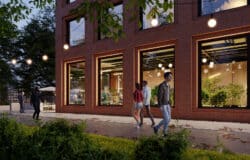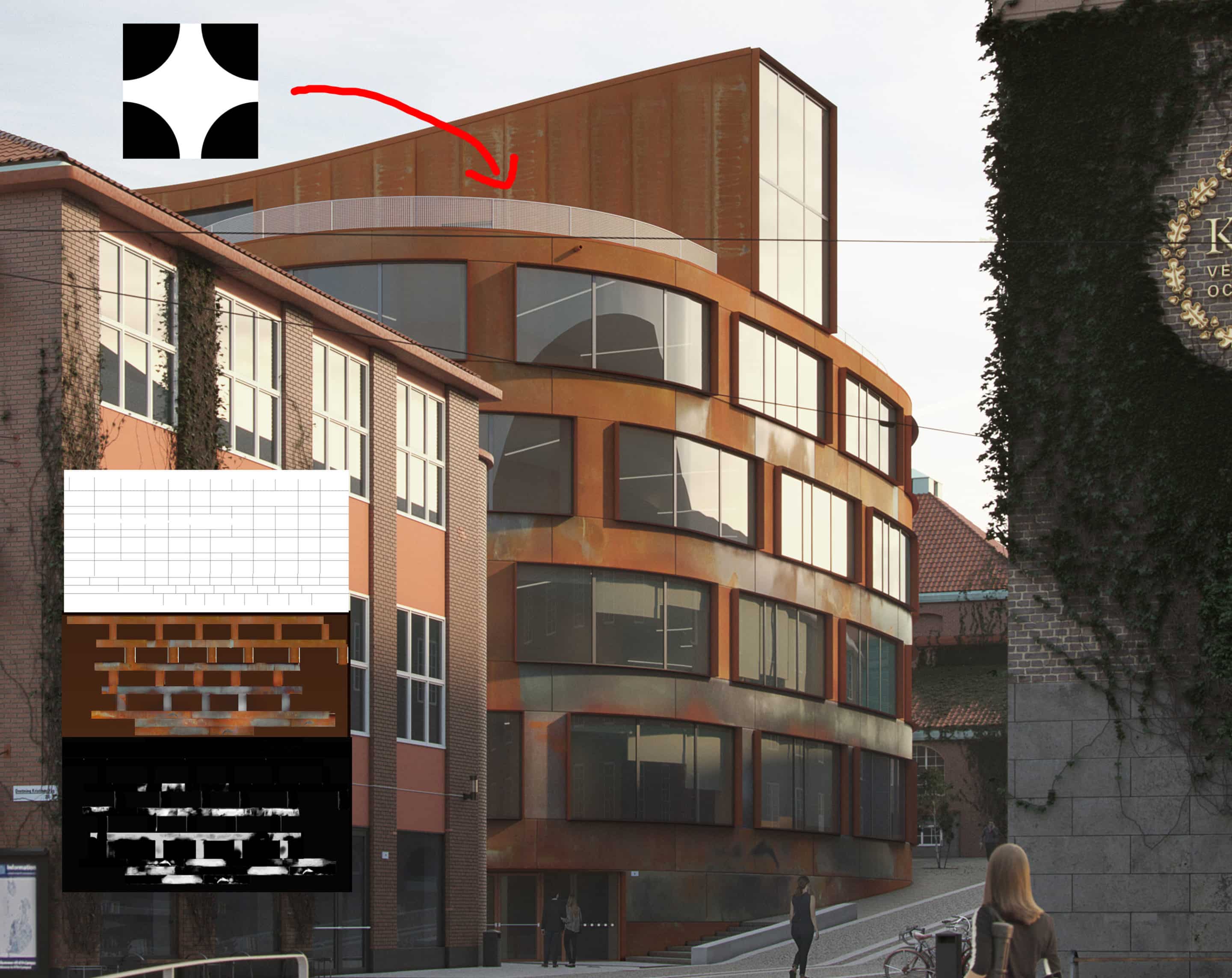As you can probably tell already, the corten material is quite a challenging one. I had to do some reading on corten and look at some reference images. What I found out was that the steel actually comes “unweathered” or “unrusted” and it gets that rust look over time by exposure to the elements. So what we see in the ArchDaily reference photos are parts of the building weathering and aging at different stages due to each panel’s different exposure to the sun and rain. I thought the best way to show that the purple-ish and greyish parts of the panel were actually “unweathered” was to show that those parts were more reflective than their weathered counterparts.
In my earlier attempts I tried to come up with a procedural process that would emulate this weathering pattern, but to no avail. After what it felt like hitting my head against the wall for a couple of days I realized: there’s no other way, I have to unwrap the UVW. It wasn’t a big deal, as I had already unwrapped the building to create the joint between the panels as displacement. And after just one afternoon creating the diffuse and reflection UVs in photoshop I realized that I should have decided to do that way earlier. Lesson learned for me.
In a better reference photo I saw that the guardrail on the roof is actually made up of perforated panels, not glass. So I “unshelled” the existing glass model and applied a simple opacity map to the rail’s planes.














